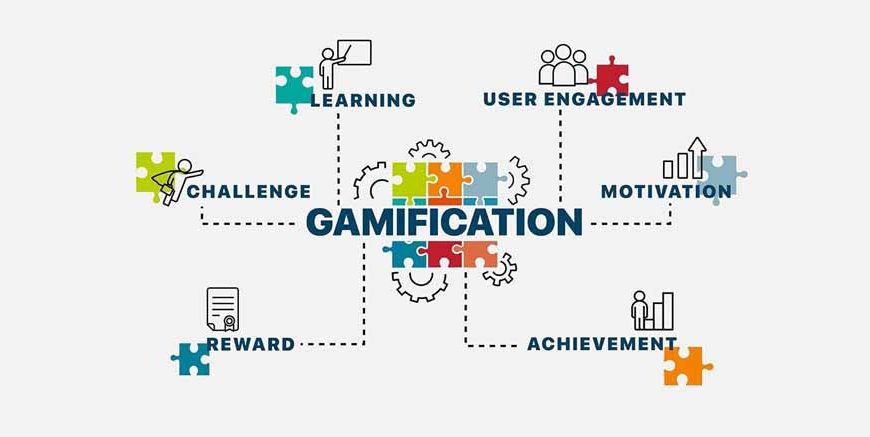In the present day learners, educators and parents are always on the lookout for opportunities to make learning exciting for the learners. One of the strategies that has come up as popular is the so-called gamification. Research has revealed that it enhances learning abilities and becomes popular as it encourages fun learning in children. To that end, it is about time we took a closer look at the potential of gamification in developing children’s cognitive performance.
Table of Content:
- What is Gamification?
- Children’s Cognitive Development
- Benefits of Gamification
- Improving Cognitive Skills
- Gamification in Education
What is Gamification?
Gamification is the use of game elements and techniques in areas outside games. It can be used to supplement a game element with aspects like points, badges, leader boards and rewards in an activity or a process. When applied to learning environments,gamification turns student learning into a game wherein a child has natural affordance for play and competition.
It is important to note that the notion of gamification is not merely a way of making the process as ‘fun’ as possible. It leverages the psychological principles that make games compelling and applies them to educational content. This approach can include elements like:
- Clear goals and objectives
- Immediate feedback on performance
- Progressive difficulty levels
- Rewards for achievement
- Competitive or collaborative elements
Therefore, incorporating such elements in the learning process will enhance interest and motivation in learning activities to enhance cognitive abilities in children.
Children’s Cognitive Development:
Cognitive development in children can be described as the systematic changes in children’s ways of knowing and understanding the environment and the self. This includes abilities such as:
- Attention and focus
- Memory
- Problem-solving
- Critical thinking
- Language skills
- Spatial awareness
These are important cognitive skills that are the prerequisite for academic achievement and which are developmentally critical in childhood. The skills mentioned above have for ages been imparted using conventional teaching techniques, but game-based learning appears to be a more efficient way.
Over the developmental period, children’s cognitive capacity develops in terms of speed. Piaget’s theory of cognitive development outlines four main stages that children go through:
- Sensorimotor stage (birth to 2 years)
- Preoperational stage (2 to 7 years)
- Concrete operational stage (7 to 11 years)
- Formal operational stage (11 years and older)
This is perhaps one of the most important areas where gamification can be very helpful since it can be adapted to the different stage the child is in and provide the most appropriate challenge and reward according to his newly acquired mental abilities.
Benefits of Gamification:
Gamification offers numerous benefits in the context of children’s learning and cognitive development:
- Increased Engagement:
- Enhanced Motivation:
- Immediate Feedback:
- Personalized Learning:
- Safe Environment for Failure:
- Social Interaction:
Gamification on the other hand provides more fun than traditional education thus, children can concentrate longer.
The reward systems that exist in gamified learning experiences engage the interpersonal and extrapersonal drives hence the child will not give up in tackling tasks.
Games give immediate results on the performance of the child, and this gives the child an opportunity to change on something they easily realized they did wrong.
Most of the gamified systems may also be designed in a manner that they follow the cadence of different learning abilities hence catering for all children.
In game-like contexts, failure is often seen as a natural part of the learning process, reducing anxiety and encouraging risk-taking in problem-solving.
Many gamified experiences incorporate collaborative or competitive elements, fostering social skills alongside cognitive development.
These benefits contribute to a more effective and enjoyable learning experience, potentially leading to improved cognitive outcomes for children.
Improving Cognitive Skills:
Gamification can target and enhance specific cognitive skills in children:
- Attention and Focus:
- Memory:
- Problem-Solving:
- Spatial Awareness:
- Language Skills:
- Executive Functions:
Games often require sustained attention to achieve objectives, helping children practice focusing for extended periods.
Most of the games entail recall of rules, sequences or information which means that both the short-term and the long-term memory is in play.
Tangrams and strategy games stimulate the child’s ability to reason and teach problem solving skills.
Those games which are in some way related to spatial navigation or an manipulation of objects in space should benefit spatial skills.
Those types of games that are built around words and those that are combined with an interesting story can help to expand vocabulary and language tips.
Games that involve decision making and time management activities improve the executive function skills.
Through introducing activities that are based on the identified programs for cognitive areas teachers and parents can foster child’s general cognitive development by using a very effective and fun approach.
Gamification in Education:
The integration of gamification in educational settings has shown promising results:
- Classroom Implementation:
- Educational Software:
- Serious Games:
- Adaptive Learning Systems:
- Augmented and Virtual Reality:
As for the classroom, teachers can apply game-like features in participation points, ‘leveling up’ as the concepts are introduced.
A number of learning platforms employ the use of factors assigned to fashioning subjects such as mathematics, sciences, or language among others.
These are games developed to meet the purpose of having to educate through play, with most of them mimicking real life situations in order to pass on certain lessons.
Based on AI, some platforms incorporate elements of games to provide each learner with the path of learning that is most effective for them.
It is opportune for these technologies to develop educational, game-based learning applications that help in the understanding of theoretical notions.
Gamification in the context of learning is crucial to plan and consider the learning outcomes before the integration. When efficiently adopted,it can help in changes of the learning process making it more productive for children.
The idea of gamification actually gives a strong reason in enhancing cognitive skills of a child. In general, utilizing the exciting features and characteristics of the games, educationists and parents can provide lessons which are not only more fun but also more exercise on significant thinking abilities.
Since the advancement of technology is set to rise in the coming years, more creative ways of using gamification in education is most likely to emerge. Nevertheless, it is crucial to point out the fact that the gamification is not universally her advice applicable. At the same time, its positive outcomes largely depend on proper and meaningful use in the course of educational activity and, of course, on its consideration of children’s developmental characteristics.
Thus, by realizing what the principles of gamification are and how necessary cognitive processes they address, we are able to explore new possibilities of child’s learning, to prepare them for further and further complication of the world.
For more such interesting blogs, Visit EuroKids
















